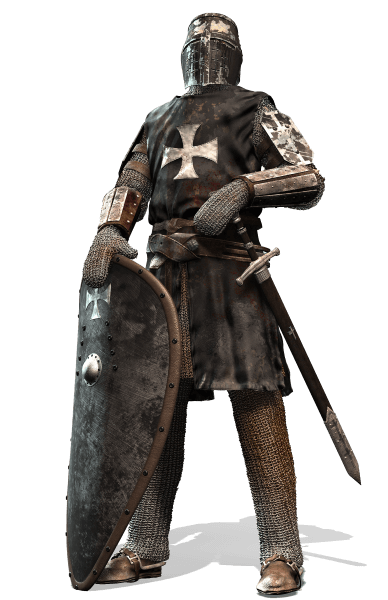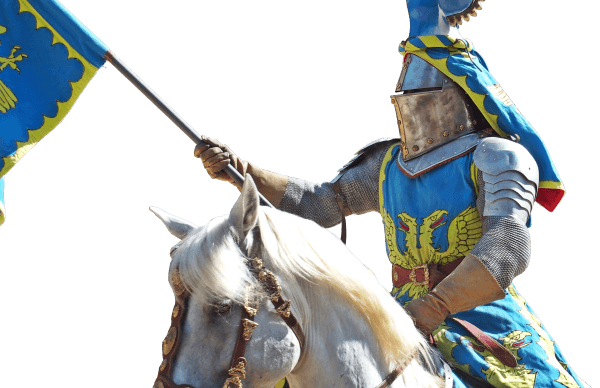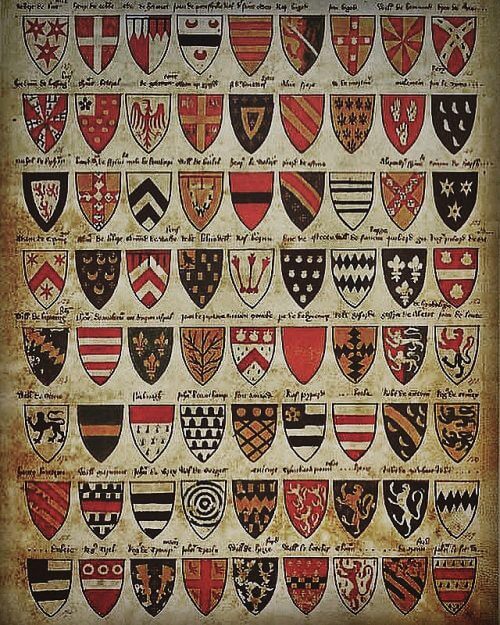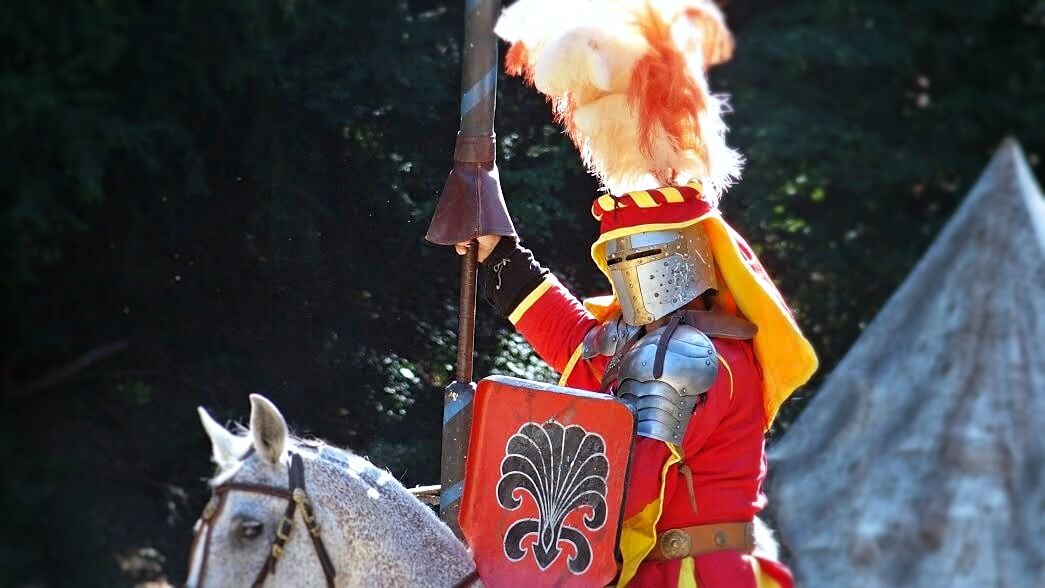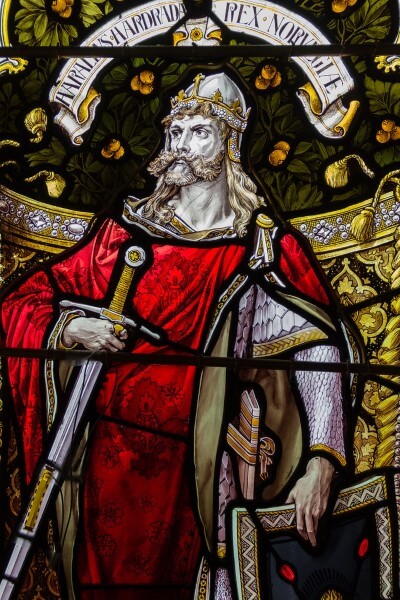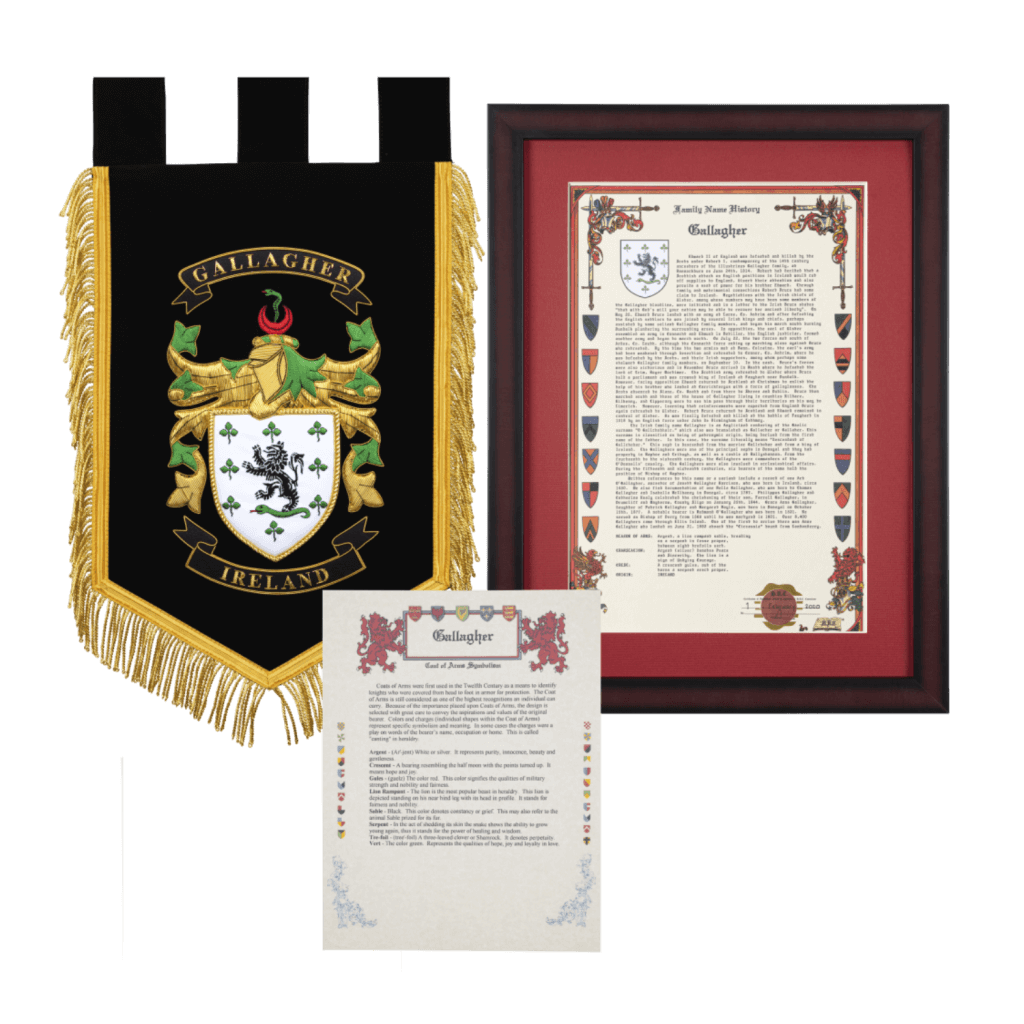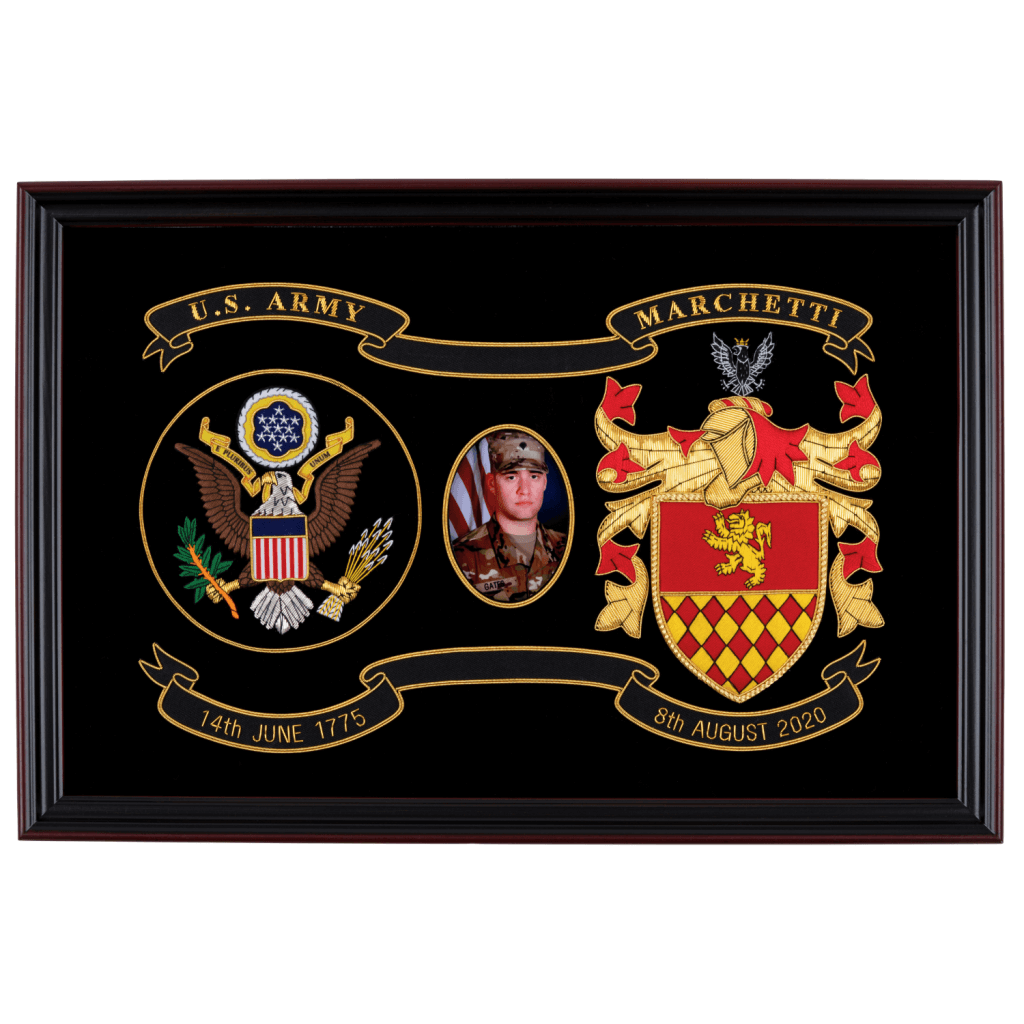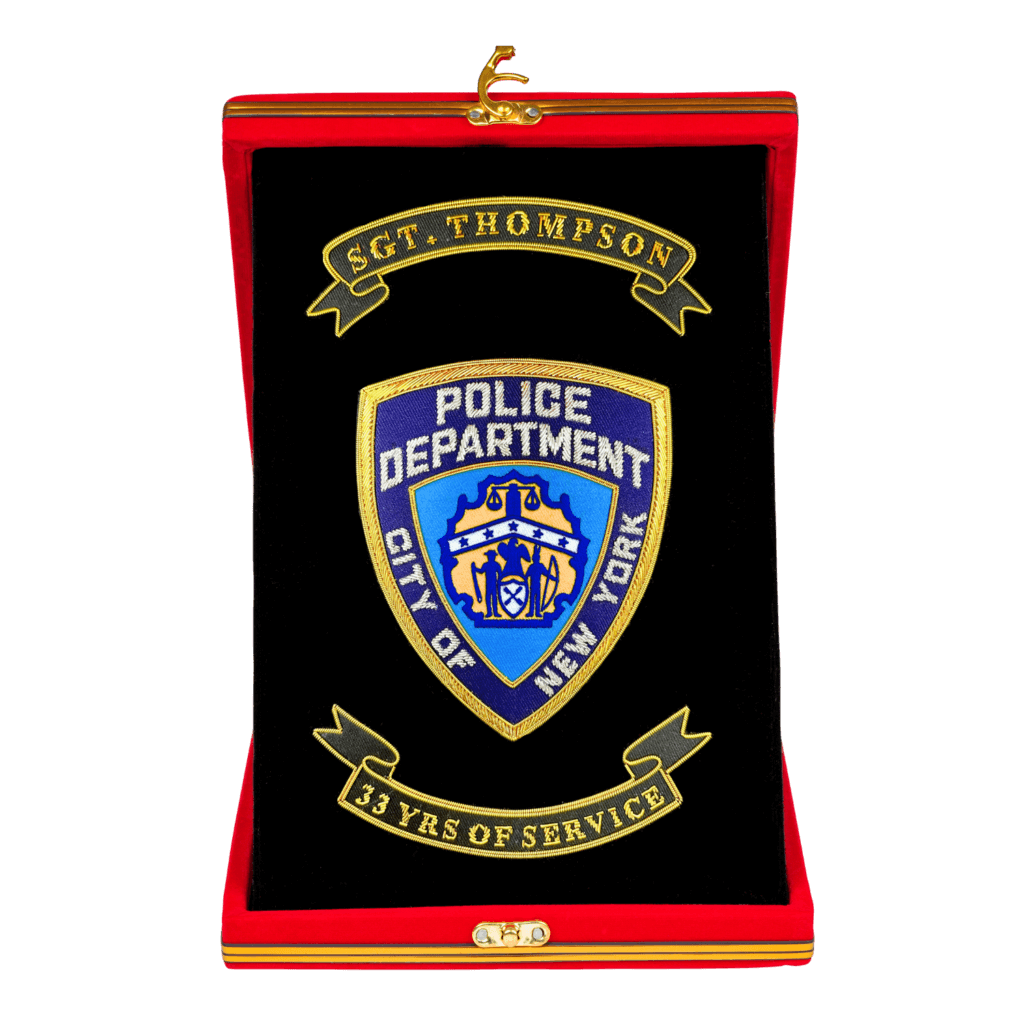Heraldry arose in the 11th and 12th centuries, around the time of the Crusades, a series of military campaigns undertaken by Christian armies from 1096 to 1487. In battle, a knight dressed head to toe in armor would not be recognizable to friend or foe, so a new method of identification became necessary. The shield, heraldry’s most recognizable component, provided a broad, flat surface on which to paint colors and symbols assigned to a particular nobleman and his knights. A nobleman also usually wore an outer garment called a surcoat to protect him from the heat of the sun, often decorated with the same devices that appeared on a knight’s shield. It is from this garment that the phrase “coat of arms” is derived.
The origins of heraldry stretch back into ancient times. Warriors often decorated their shields with patterns and mythological motifs. Army units of the Roman Empire were identified by the distinctive markings on their shields. These were not heraldic in the medieval sense, as they were associated with military units, not individuals or families.

